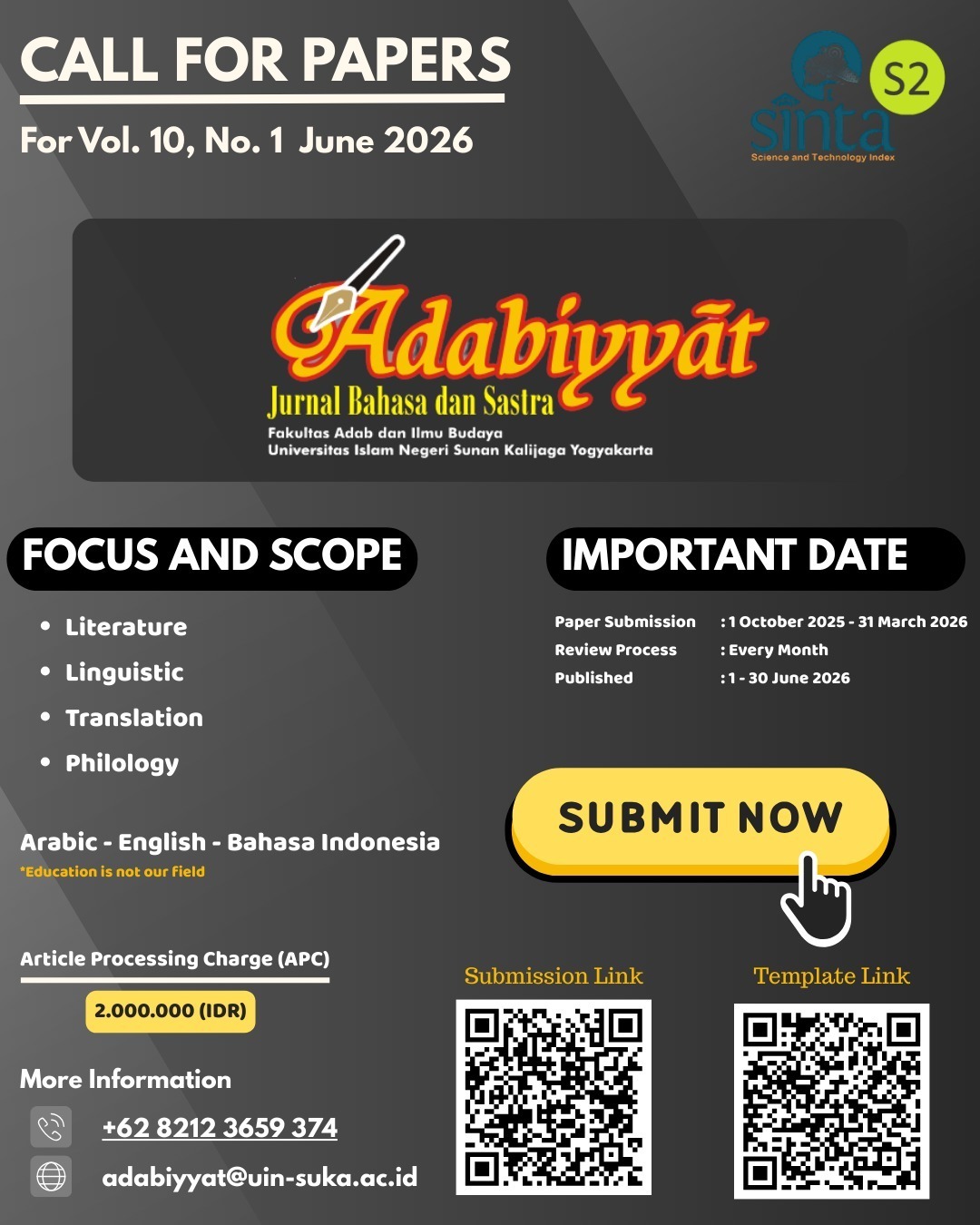KAJIAN SLANG AUSTRALIA: PROSES MORFOLOGIS DAN PERUBAHAN SEMANTIK
DOI:
https://doi.org/10.14421/ajbs.2018.02205Abstract
This study aims to investigate the formation process slang of Australian English. This research employs a qualitative-descriptive approach. The data of this research are conversation transcripts of Australians consisting three males and one female and being analysed analytically to find the use of slang. Observational technique was used to gather the data. The researcher taped the conversation and transcribed them to make the data analysis easier. Slang is formed into a morphological and semantic process. The morphological processes consist of derivation, clipping, blending, acronym, and alliteration. The semantic process consists of generalization, metaphor, specialization, and arbitrary process. The use of slang affects the society in terms of social and communication function. Knowing this intensely helps non natives to get close and increase more understanding in communicating with Australians.
Downloads
References
Akmajian, Adrian, Ann Kathleen Farmer, Lee Bickmore, Richard A. Demers, dan Robert M. Harnish. 1984. Linguistics: An Introduction to Language and Communication. Seventh edition. Cambridge, Massachusetts London: The MIT Press.
Burdová, Veronika. 2009. “Students Slang.” Masarykova Univerzita, Pedagogická Fakulta. Https://is.muni.cz/th/yqqep/.
Burridge, Kate, dan Bernd Kortmann. 2008. The Pacific and Australasia. Vol. 3. Berlin: Mouton de Gruyter.
Collins, Peter. 2012. “Australian English: Its Evolution and Current State.” International Journal of Language, Translation and Intercultural Communication 1 (0): 75–86. Https://doi.org/10. 12681/ijltic.11.
Eble, Connie. 2014. “American College Student Slang: University of North Carolina (2005–12).” Dalam Global English Slang: Methodologies and Perspectives, 48–60. New York: Routledge.
Fromkin, Victoria, David Blair, dan Peter Collins. 2000. An Introduction to Language. 4th Australian. Sydney: Holt, Rinehart & Winston.
Mattiello, Elisa. 2013. American Slang in Friends: Morphological, Semantic and Sociological Features. Cambridge Scholars Publishing. Https://arpi.unipi.it/handle/11568/764097#.XRxA8P 4 xXIU.
Partridge, Eric. 2015. Slang To-Day and Yesterday. New York: Routledge.
Seliger, Herbert W., dan Elana Goldberg Shohamy. 1989. Second Language Research Methods. New York: OUP Oxford.
Stubbs, Michael. 1989. Discourse Analysis: The Sociolinguistic Analysis of Natural Language. Oxford: Basil Blackwell Ltd.
Sulistiyanto, Priyambudi. 2010. “Indonesia-Australia Relations in the Era of Democracy: The View from the Indonesian Side.” Australian Journal of Political Science 45 (1): 117–32. Https://doi.org/10.1080/10361140903517742.
Thorne, Tony. 2004. “Slang, Style-Shifting and Sociability.” Dalam Multicultural Perspectives on English Language and Literature: International Conference, 22–23 May 2003. London: Tallinna Pedagoogikaülikooli Kirjastus.
Wiersma, William, dan Stephen G. Jurs. 2009. Research Methods in Education: An Introduction. Pearson/Allyn and Bacon.
Wilton, Dave. 2001. “Methods of Word Formation.” www.wordorigins.org. 15 Januari 2001. Http://www.wordorigins.org/index.php/more/176/.
Downloads
Published
Issue
Section
License
Copyright (c) 2018 Anggara Jatu Kusumawati

This work is licensed under a Creative Commons Attribution-ShareAlike 4.0 International License.
- Adabiyyāt: Jurnal Bahasa dan Sastra publishes all articles entirely in full text.
- It is permissible for readers to download and to use it for scientific purposes and scientific dissemination.
- The author can re-publish the article that has been published by the Adabiyyāt: Jurnal Bahasa dan Sastra after obtaining written permission from the editor. This letter can be obtained by submitting a request letter for permission to republish the article to Adabiyyāt: Jurnal Bahasa dan Sastra via email adabiyyat@uin-suka.ac.id. In the second publication, the author is required to include information that the article was firstly published by the Adabiyyāt: Jurnal Bahasa dan Sastra.









